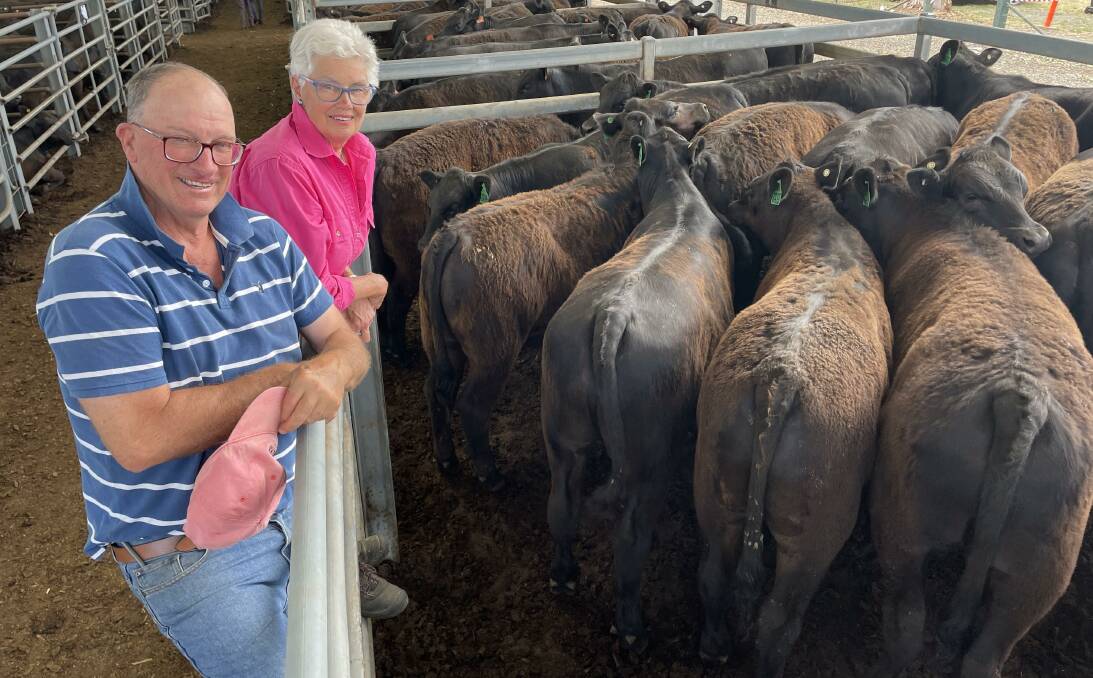
Early signs indicated a bust of a season for Victorian farmers but a late La Nina declaration has led to a 2021 seasonal boom for many southern producers.
Subscribe now for unlimited access.
or signup to continue reading
After three years of punishingly-dry conditions, 2021 has been a welcomed reprieve for many Victorian farmers who have experienced rainfall above the median since November.
Farmers like Richard McGeehan and Sue Gall have welcomed the La Nina declaration with open arms, with the plentiful rain boosting production and profits for the Euroa-based producers.
They own a 320-hectare property, which runs a 170-strong Angus breeding herd in Victoria's north-east, and average 600 millimetre annual rainfall.
"The last two seasons have been unbelievable," Mr McGeehan said.
La Nina has been the icing on the cake for cattle producers who are basking in the glow of extraordinary beef prices, with the above-average rain increasing pasture growth and boosting cattle weight.
"Our prices have gone up significantly year-on-year, with our nine-month-old steers averaging $2300 [a head] and heifers $2300 - that is brilliant," he said.
"It means we can pay down debt and the risk factor has been greatly reduced because of the La Nina."
In an average year, the partnership spend on average $12,000 a year on supplement livestock feed, an expense that had been more than halved this year.
"Our workload has reduced, which is good for your mental health," he said.
"When you have feed, water, and cattle in good condition, farming is stress-free, it's our purple patch and all the stars have aligned."
IN OTHER NEWS:
Statewide, rainfall was 24 per cent above the spring average of 181mm, the highest since 2016.
Averaged across the state, the year-to-date rainfall total for January to November was about 668mm, 10pc above average, according to the Bureau of Meteorology.
Thomas Elder Markets market analyst Matthew Dalgleish said the conditions had been a burden on some fruit and grain growers in the state's north.
"The old saying goes 'you can you can make money from mud but you can't make it out of dust'," Mr Dalgleish said.
BoM declared a La Nina event in mid-November with a sufficient number of indicators demonstrating the existence of a coupled ocean and atmosphere in the Pacific.
The impact to the Victorian livestock markets was immediate, with cattle prices hitting record levels and lamb prices making unseasonal gains during the spring flush.
"Lamb prices have had some price decline but when you compare this time of the year to the last year, we are 100 cents a kilogram higher for most categories," he said.
"It is evident there is still good demand to rebuild the flock."
Mr Dalgleish said hail and prolonged rainfall had damaged fruit and delayed harvests, or made them more challenging, while relentless rain and frost had downgraded some and led to crop claims into the millions.
For the grains industry, the bumper grain crop predicted for 2021 has been downgraded in some places due to ongoing hail events in October, with losses estimated in the millions.
"In Victoria, we have had frost and hail that was sporadic through spring," he said.
One positive for those crops that were impacted by weather damage was the potential for a big harvest next year.
"It is putting moisture in the soil profile so next year it will be a big harvest," he said.


